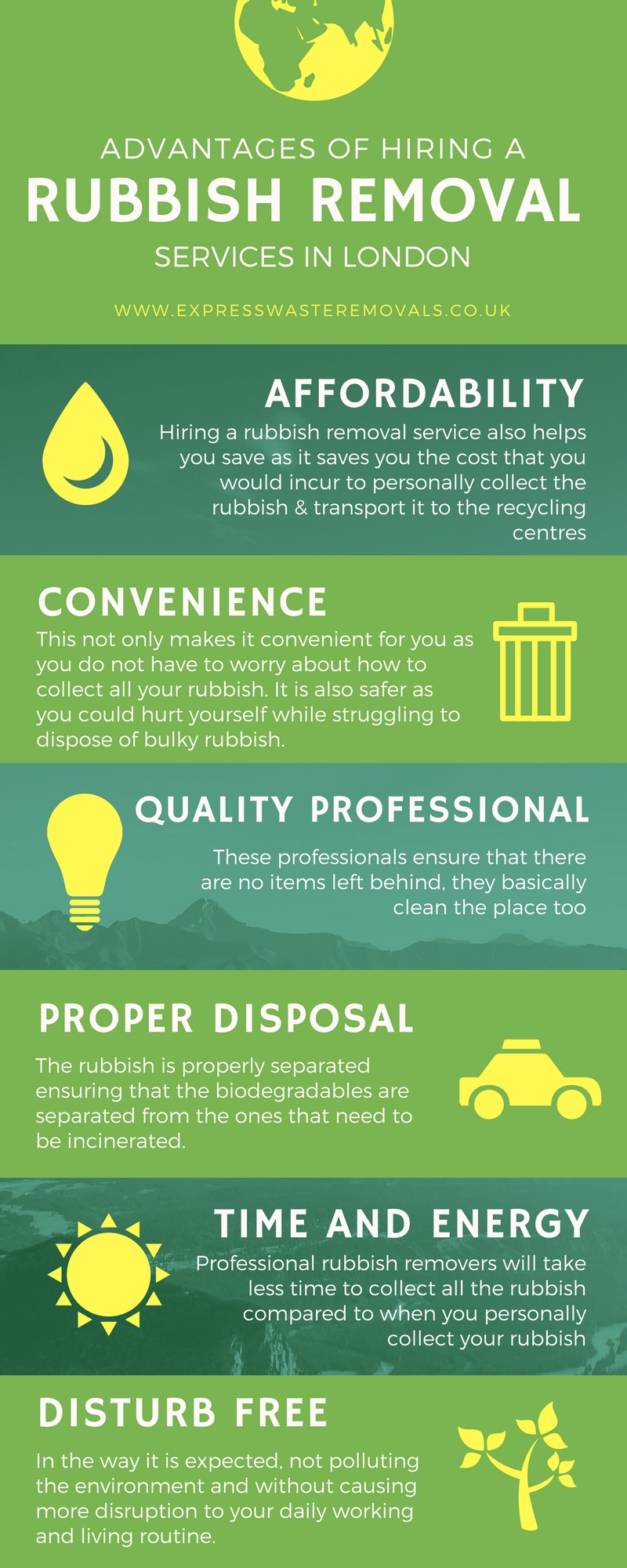Locating The Right Dumpster Size For Your Project: A Detailed Guide
Locating The Right Dumpster Size For Your Project: A Detailed Guide
Blog Article
Web Content Develop By-Templeton Berger
When starting a project that requires a dumpster, the dimension you choose can significantly affect its effectiveness and cost-effectiveness. Picture having the best container that suits all your waste without being excessively huge or too small. Everything beginnings with recognizing the subtleties of your job and choosing a dumpster dimension that straightens with your details requirements. So, before you choose, consider the variables at play to guarantee a smooth waste administration procedure from start to finish.
Elements to Think about
When choosing the right dumpster dimension, there are a number of vital factors to consider.
First, think about the type of waste you'll be getting rid of. Various materials may call for differing quantities of space, so recognizing what you'll be putting in the dumpster is essential.
Next, analyze the quantity of waste you anticipate to create. If you ignore the quantity, you may require to make multiple trips to dispose of whatever, which can be troublesome and expensive. On the other hand, renting a dumpster that's too big can result in unneeded costs.
Furthermore, take into consideration the area where the dumpster will be put. Make sure there suffices space for the dumpster to be delivered and picked up without any obstructions.
Lastly, think about any type of weight limitations that may apply. Exceeding the weight limit can lead to additional charges and even the rejection of service.
Dumpster Size Options
For selecting the appropriate dumpster dimension, it's essential to have a good understanding of the offered options. Dumpster dimensions usually vary from 10 to 40 cubic yards, with variations in between.
A 10-yard dumpster is suitable for tiny projects like a garage cleanout or a small improvement. If you're dealing with a medium-sized project such as a kitchen area remodel or a cellar cleanout, a 20-yard dumpster could be the right choice.
For larger tasks like a whole-house renovation or commercial building and construction, a 30 or 40-yard dumpster could be preferable to suit the quantity of waste produced.
When selecting a dumpster dimension, take into consideration the amount and type of debris you expect to throw away. It's far better to choose a slightly larger dimension if you're unsure to avoid overfilling. Bear in mind, it's even more economical to lease a dumpster that fits your requirements rather than needing to get an added one.
Matching Size to Task
Ideally matching the dumpster size to your job is crucial for reliable waste monitoring. To establish the best dimension, consider the extent and nature of your task.
For tiny home cleanouts or renovations, a 10-yard dumpster might be adequate. dumpster rental sweet dumps are usually 12 feet long and can hold around 4 pickup tons of waste.
For larger tasks like renovating several rooms or clearing out a large estate, a 20-yard dumpster might be preferable. These are around 22 feet long and can hold roughly 8 pickup loads.
If you're dealing with a significant building and construction task or business remodelling, a 30-yard dumpster could be the most effective fit. These dumpsters are about 22 feet long and can fit concerning 12 pickup truck lots of particles.
Matching the dumpster dimension to your project ensures you have enough room for all waste products without overpaying for unused capability.
https://www.prunderground.com/priority-dumpster-rental-wayne-offers-benefits-of-waste-disposal-for-construction-sites/00295388/
To conclude, choosing the best dumpster dimension for your job is critical for reliable waste disposal. By taking into consideration factors like the type and amount of waste, space availability, weight constraints, and spending plan restrictions, you can ensure you have the ideal size dumpster for your requirements. Ensure to match the size of the dumpster to the scope and nature of your project to avoid overspending on unnecessary expenses.
